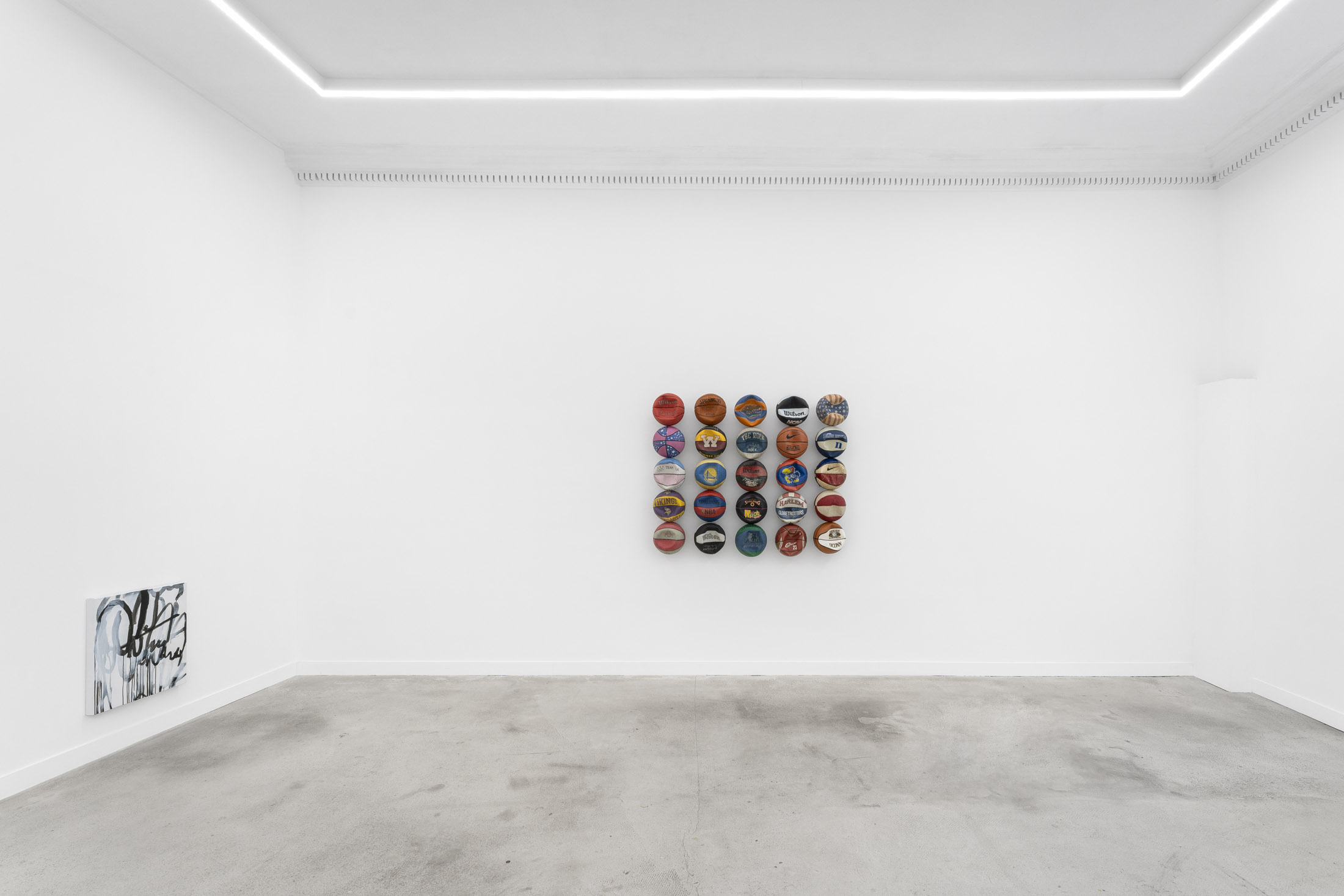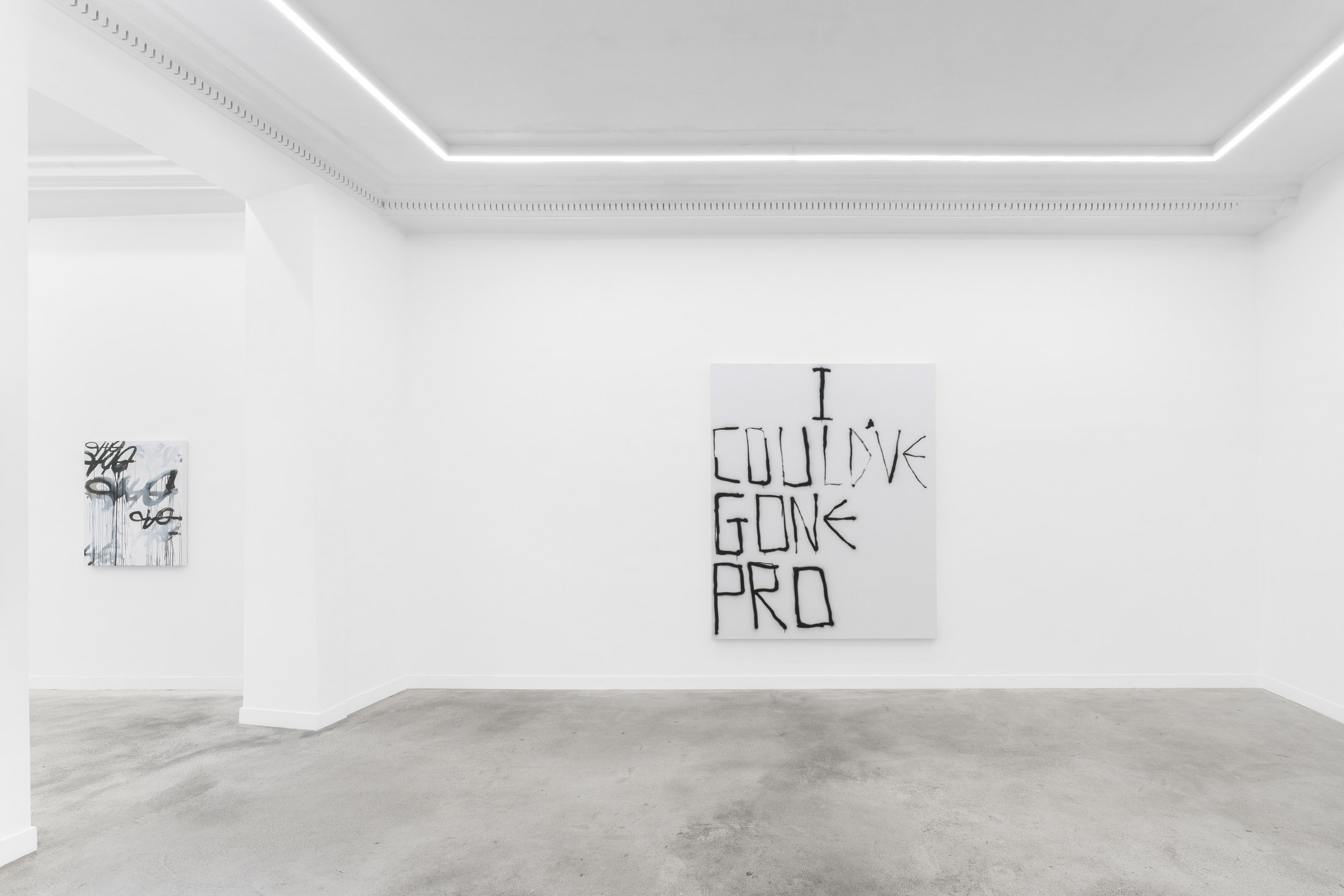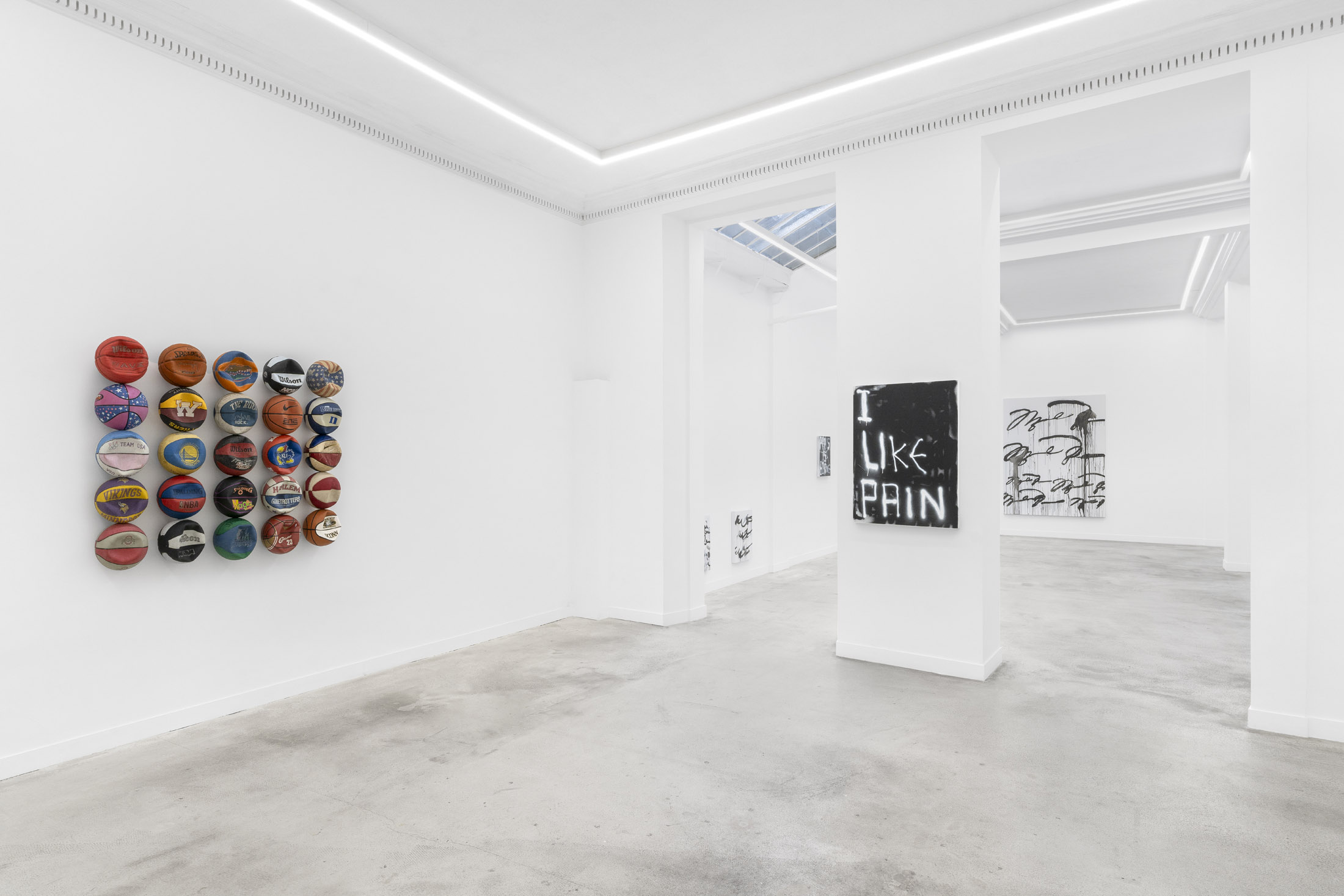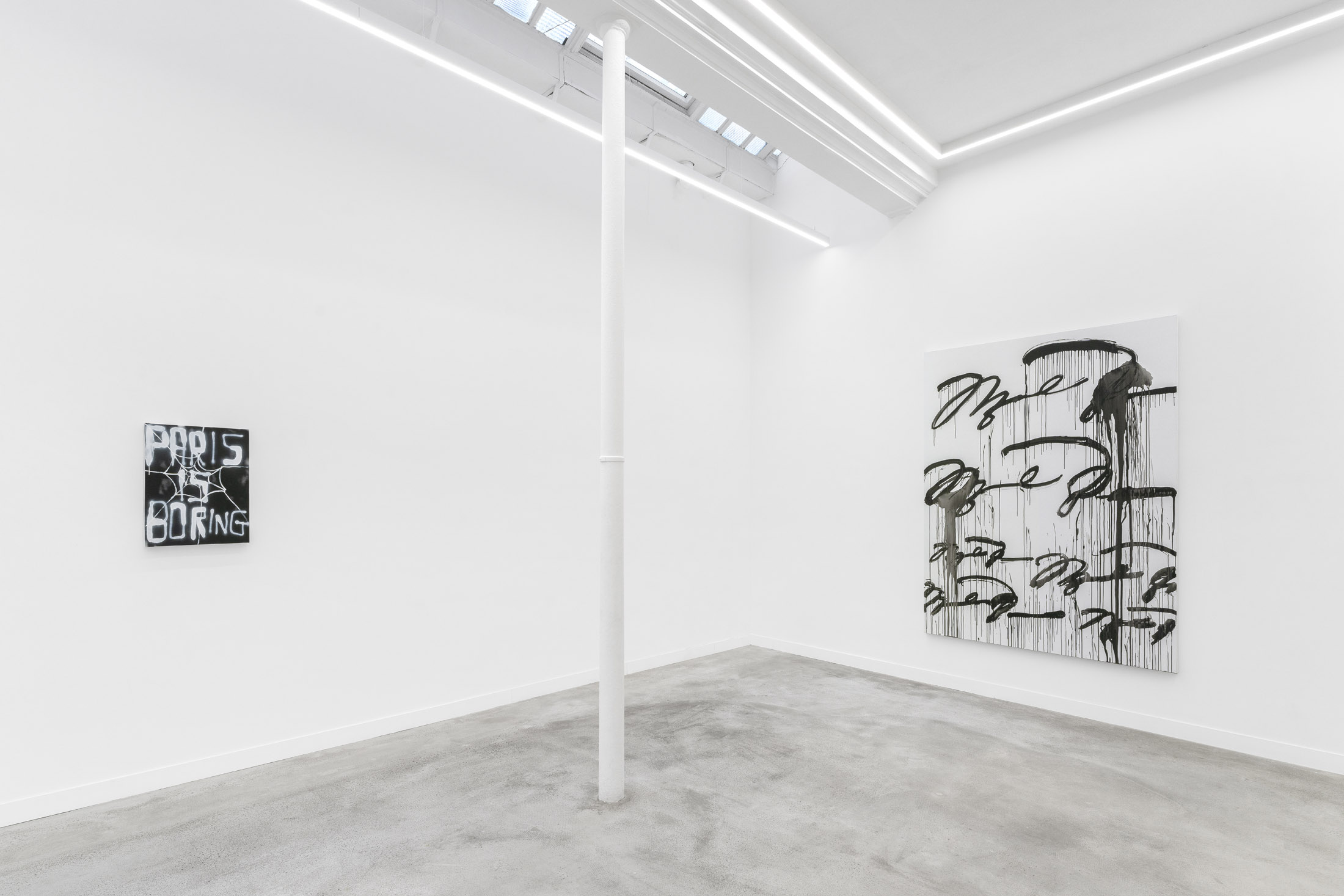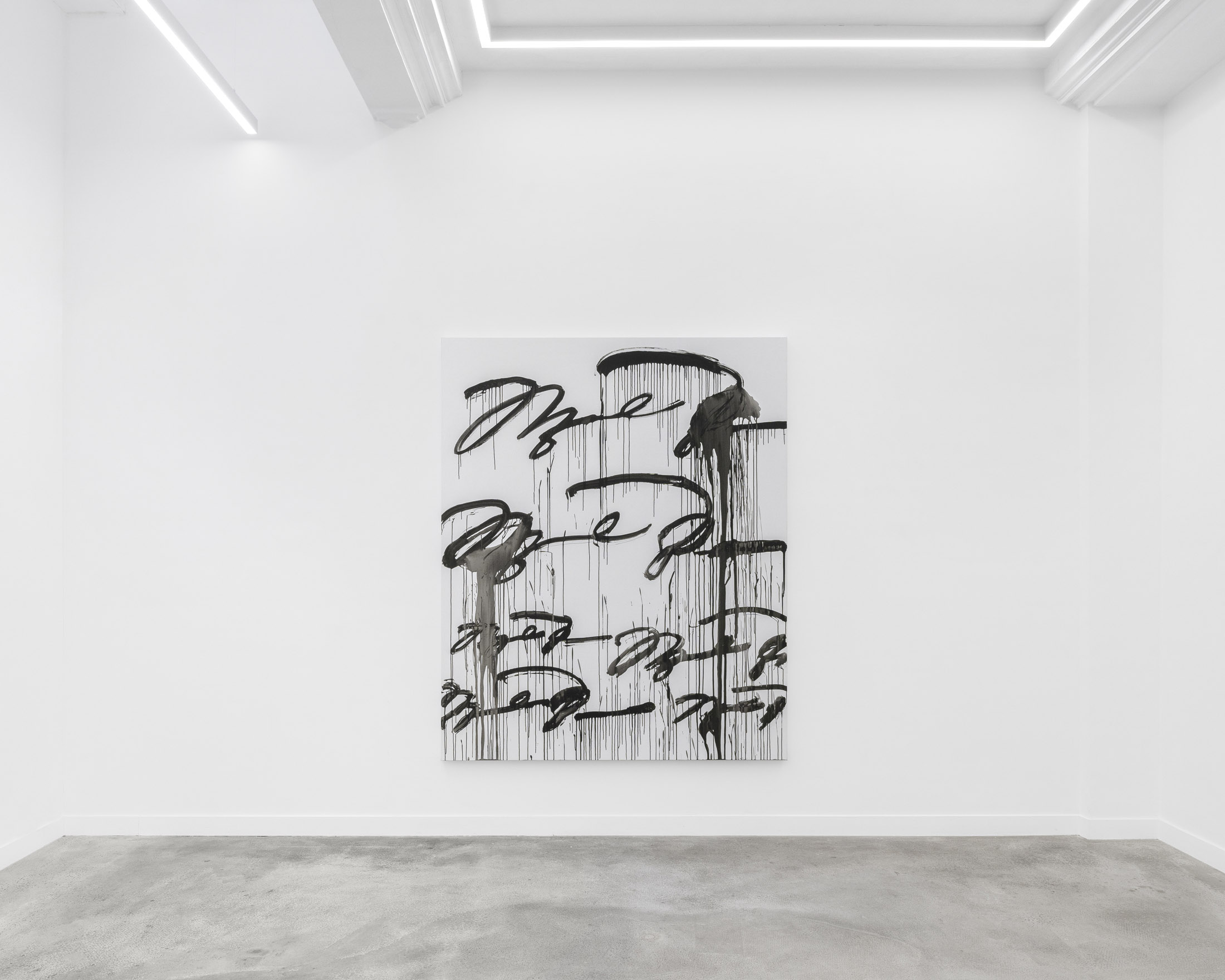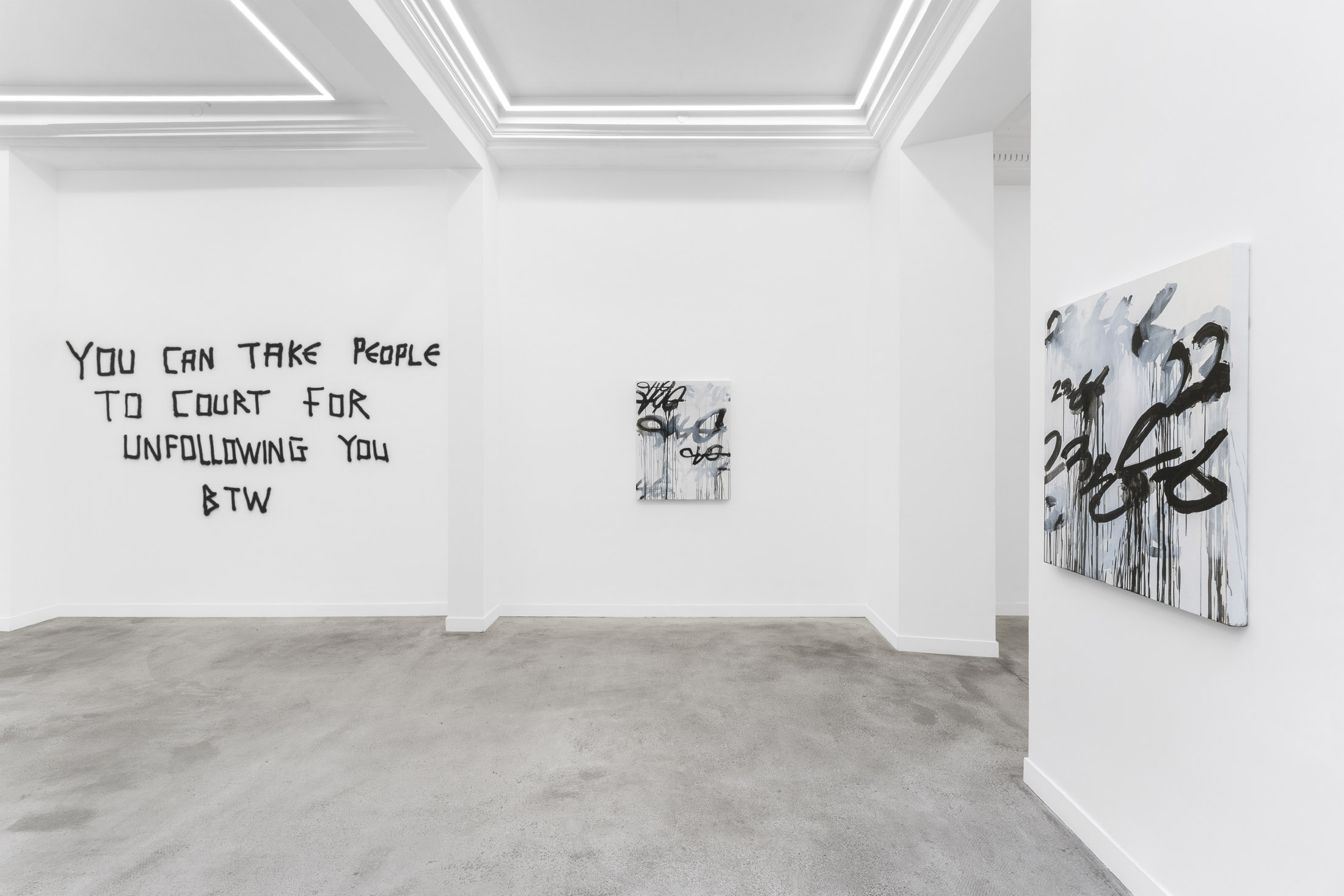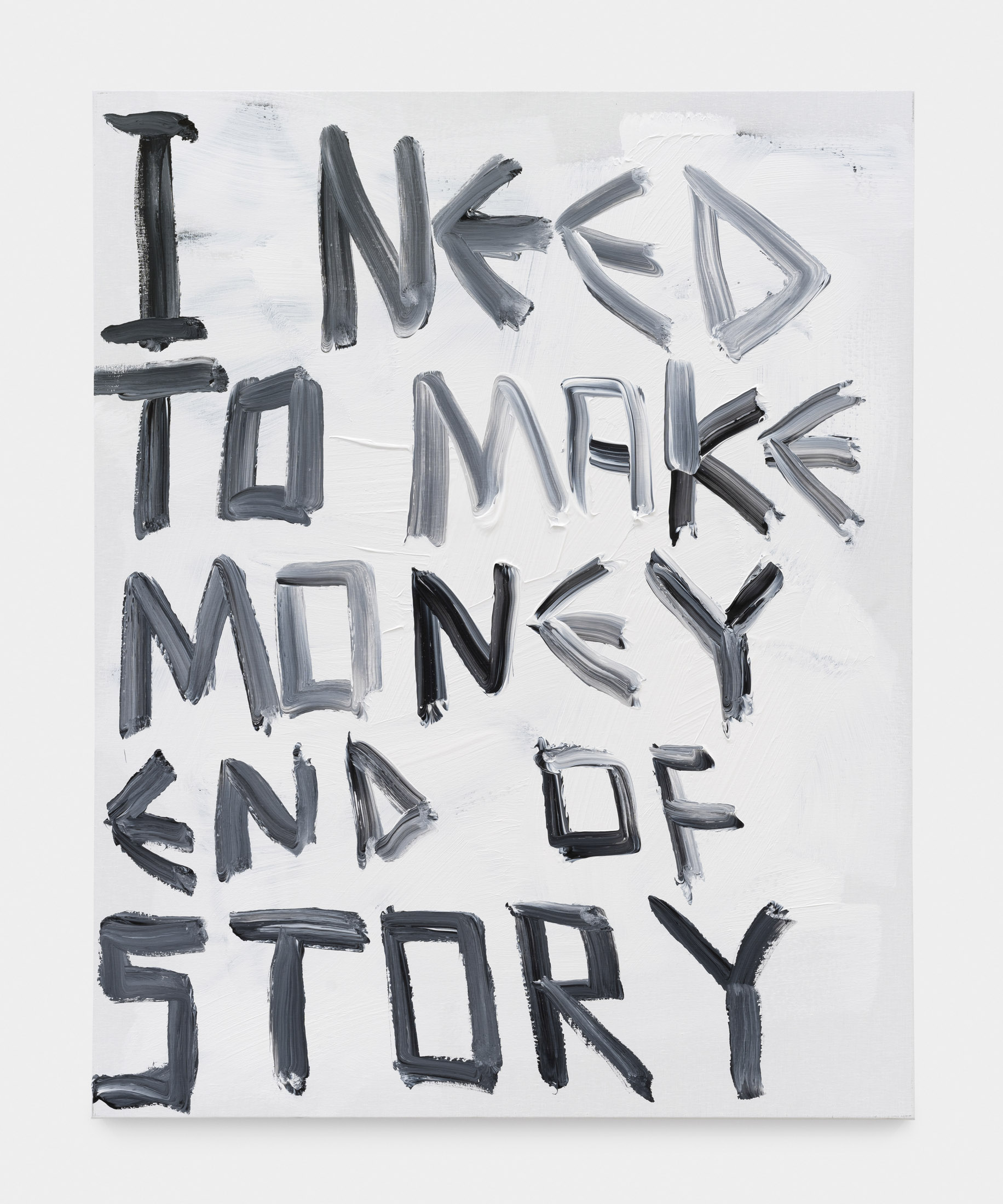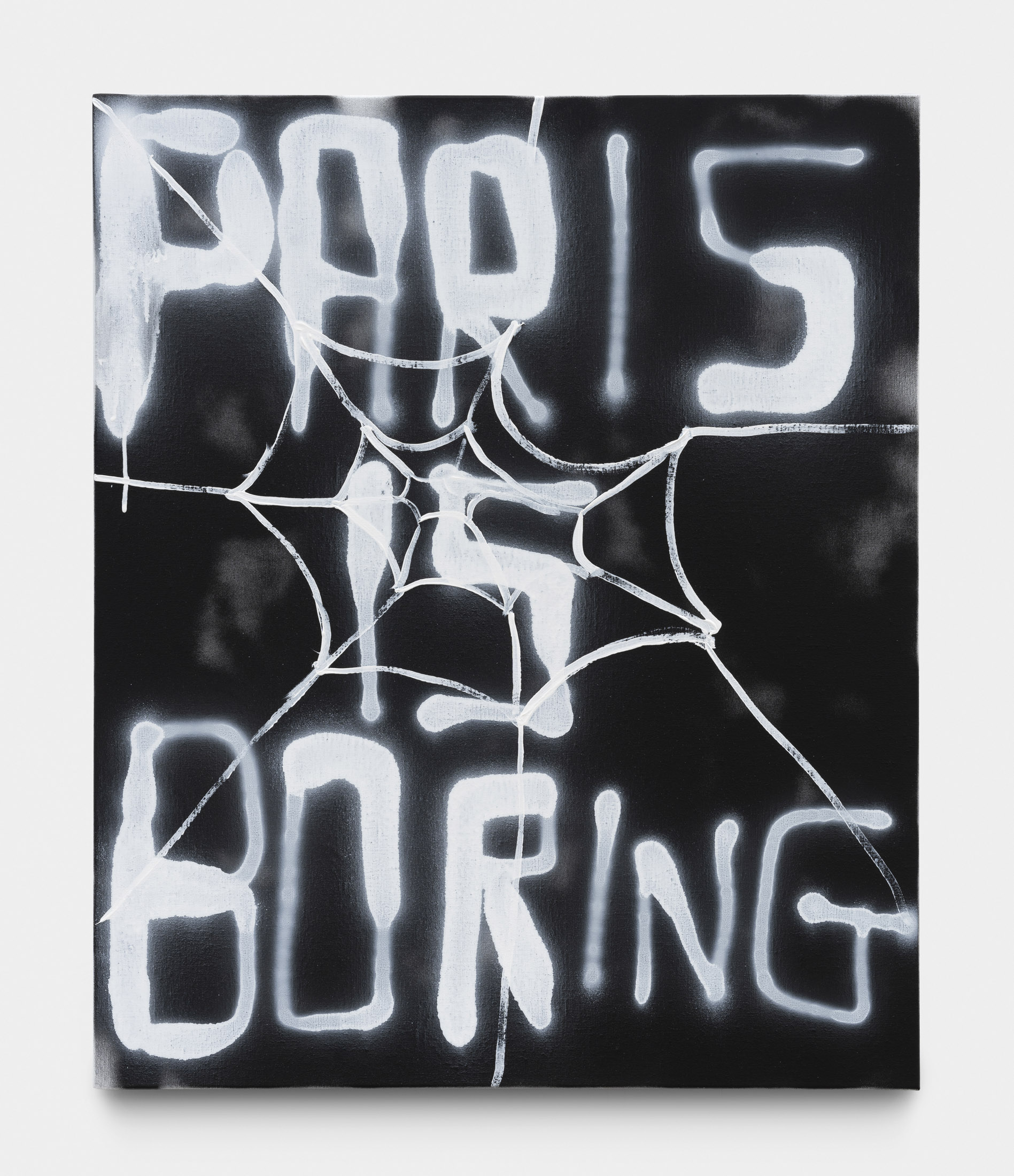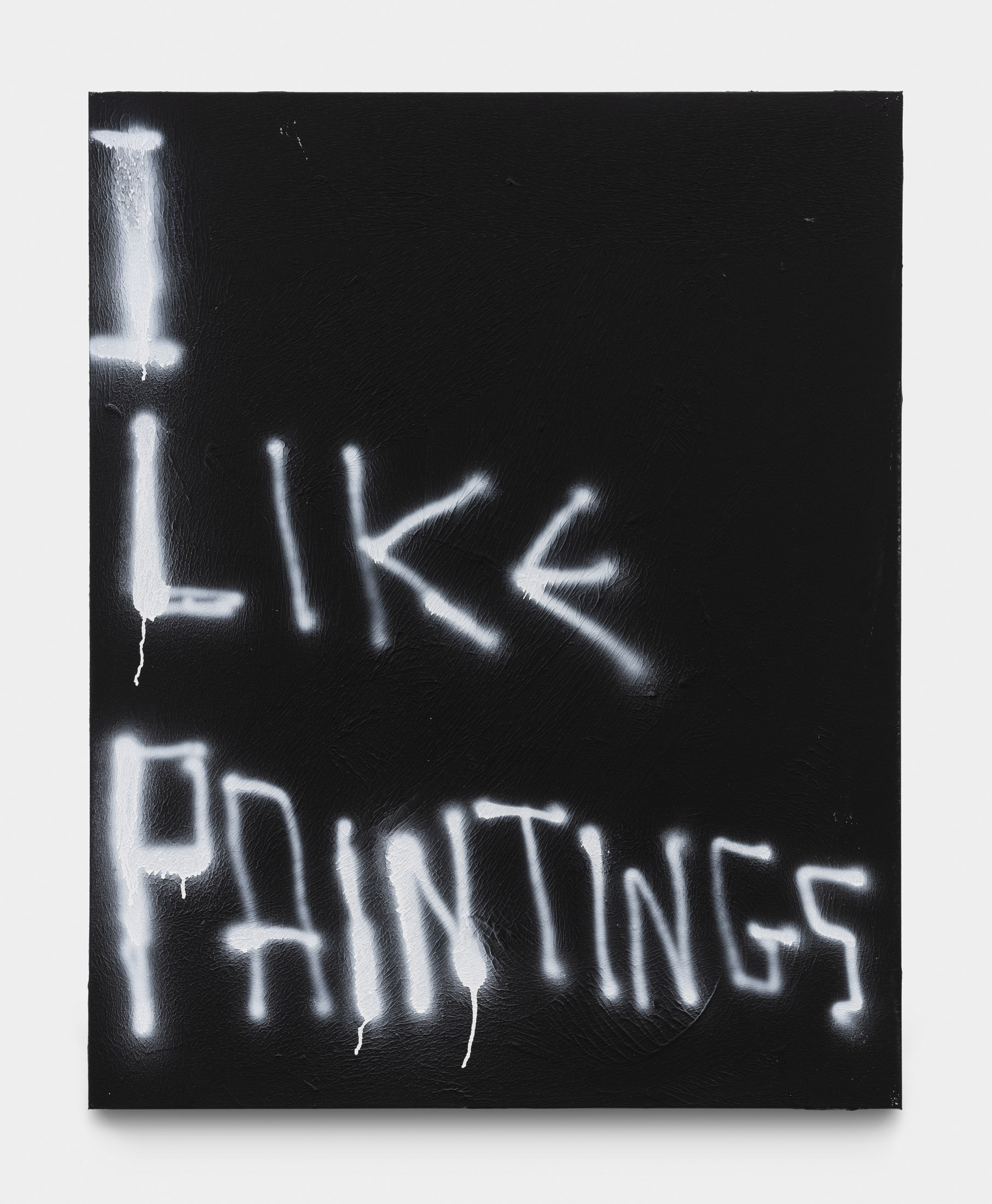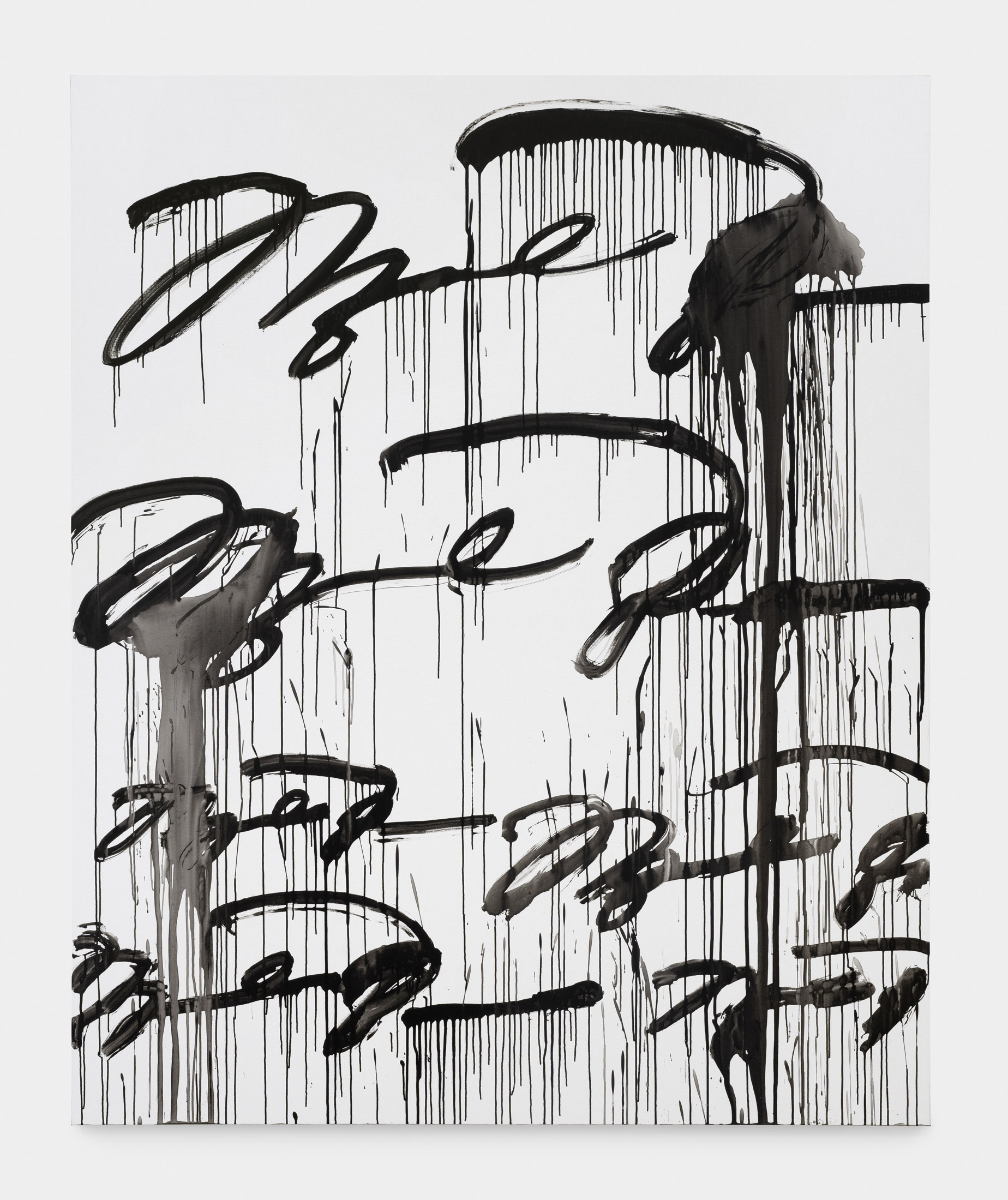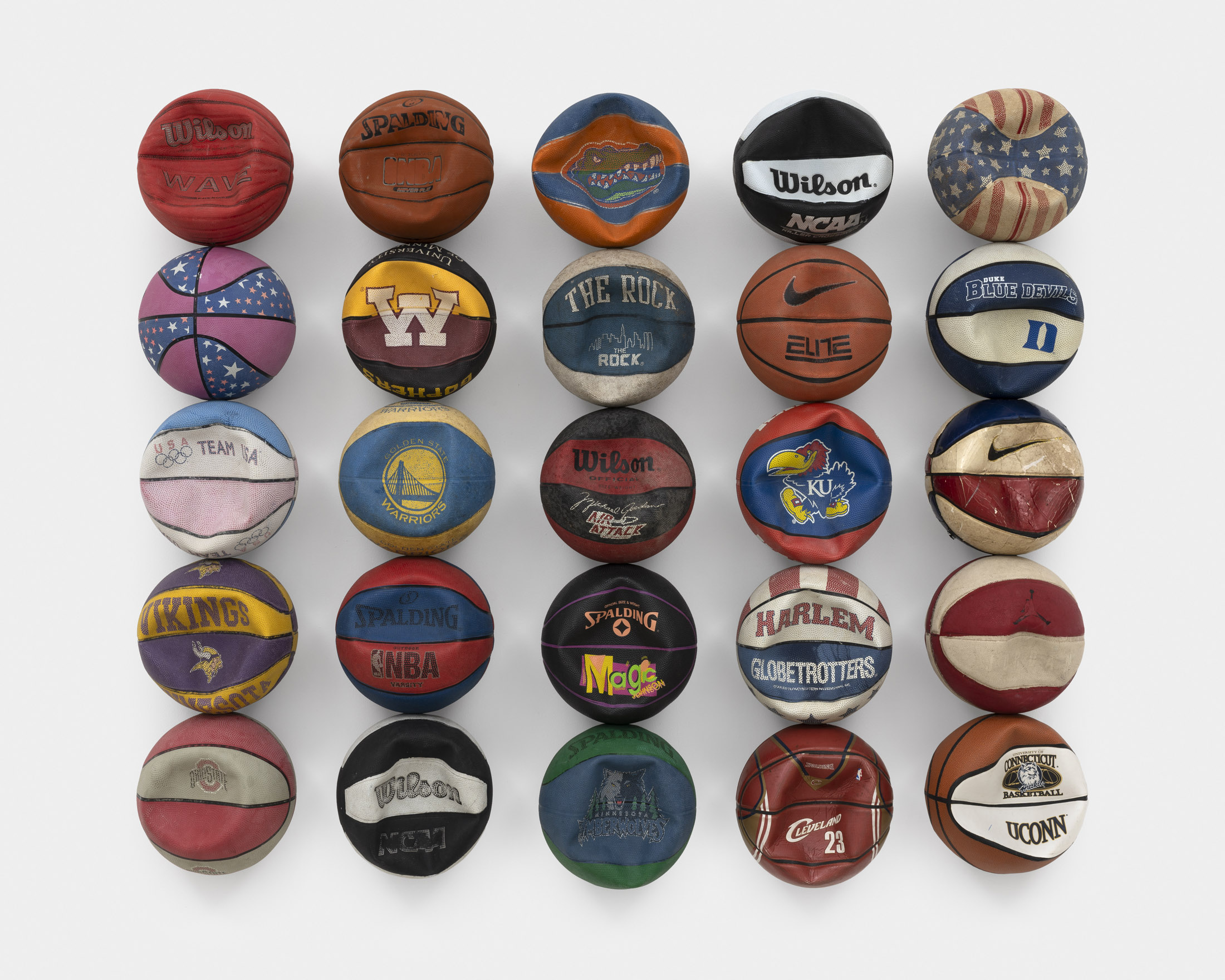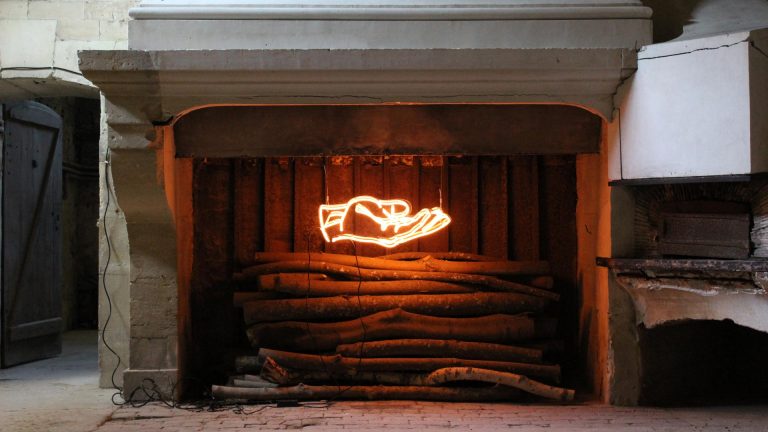Artists: Richie Culver and Tyrrell Winston
Exhibition title: Spitball
Venue: Stems Gallery, Paris, France
Date: September 2 – October 7, 2023
Photography: all images courtesy of the artist and Stems Gallery, Brussels/Paris
Spitball or the art of overflow
Every set of rules inevitably brings along its share of transgressions. In baseball, there’s the spitball technique which involves moistening the ball with saliva before throwing it, in order to increase its speed and catch the batter off guard. Since then, the name of this forbidden practice has taken on other meanings, both literal and figurative. Small balls of paper or water that are blown through a straw to create projectiles. A brand of full-bodied whisky, with hints of cinnamon, coffee, and chocolate. But above all, a lively exchange of ideas between individuals, free of any filters or much prior thought. Spitball then becomes an expression of spontaneous, raw, and direct thought, even if it risks being abrasive. It’s delivered as if it were spat out onto a sheet of paper, before being analyzed and organized into an idea.
For their first exhibition as a duo, Richie Culver and Tyrrell Winston fully embrace this term, even going so far as to choose it as their title. This decision arose from unrestrained discussions between the two artists, deprived of tiptoeing or evasiveness. It is also a nod to their shared interest in team sports.
Coincidentally or not, saliva holds a special place in their respective artistic practices. In Culver’s case, it subtly appears as a watermark behind every word, phrase, or expression written in large letters using spray cans or black paint. This dynamic, fast-paced graphic style is the hallmark of graffiti art. Clear and impactful, these contemporary aphorisms illustrate thoughts that have been formulated orally and with simplicity, free from the stylistic effects and embellishments often associated with literary art. In Winston’s case, the presence of saliva is more visibly noticeable in the traces left at the end of the cigarette butts he has been diligently collecting since the late 2000s on the streets of New York and Detroit, where he currently lives and works. These cigarette remnants, amassed by hundreds on frames, also represent the remnants of fleeting moments experienced by their consumers, of which only a tiny vestige remains, obscured by the cloud of banality.
Just as saliva flows from the lips and spittle reshapes itself as it spreads across its surface, the respective works of Richie Culver and Tyrell Winston embody an “art of overflow,” whose very essence lies in escaping the confines of the frame to reach its intended target. While the canvas remains the primary medium, Culver’s sentences often venture beyond it, spreading out onto walls and doors, large swaths of fabric, sheet-metal walls, or even a mattress perched on a street corner. This is a profoundly democratic medium. The text–always in English–seems to undergo a transformation when it graces the more conventional picture rails of the exhibition space, almost as if it was yearning to break free. Beyond his occasionally forceful language, the artist also embraces transgression through his gestures, opting for maximum textual refinement and the “minimal effort” required by his writing. “I wanna do as little as possible but still get that mad money”, he explicitly writes on one of his works. At the heart of another equally tautological canvas, the expression “Less is less” stands as an anti-capitalist and anti-productivist manifesto, seven decades after Mies van der Rohe’s famous “less is more”—an aesthetic maxim that has often been overused. In Culver’s world, the art of overflow paradoxically revolves around the voids between his words and the untouched blank canvas. These vacant spaces undoubtedly lend solemnity to the discourse while keeping the artwork open to its potential filling.
Tyrrell Winston, on the other hand, seeks the raw material for his sculptures in the confines of the street, those liminal spaces that exist beyond the rigid, orthogonal structures imposed by American metropolises. On the ends of long sidewalks, trash accumulates and spills over before finding its way to the gutter. Similarly, Winston finds materials within the fenced basketball courts, which he has a particular affinity for. He repurposes the nets and basketballs into sculptural compositions that are grounded in accumulation, in contrast to his counterpart’s approach. From Spitball, the ball emerges once more—an epitome of sports paraphernalia. Stripped of its playful purpose, it becomes a battered and deflated relic, a testament to moments shared by amateurs and professionals alike. With a heart that echoes Duchamp and Dada, Tyrrell Winston aligns himself with a timeless artistic tradition, celebrating mundane objects by inviting them into the exhibition space. This is a shining example of “turning trash into treasure.”
It’s from this margin, close to the edges, that the two artists cast their sidelong gaze upon the world. From the suburbs of California for Tyrrell Winston to those in northern England for Richie Culver, both grew up in the heart of the working class. This background keeps them highly attuned to the unequal dynamics that shape our societies. While the American artist’s installations aim to highlight the sense of community that takes root in the most disadvantaged neighborhoods–a defense that sometimes proves crucial in the face of significant class-based conflicts–the British artist employs words to explicitly alert us, often with a touch of cynicism, to societal issues, the excesses of authoritarian politics, and the absurdities of an art world suffocated by dictatorial tendencies. This artistic path aligns them with luminaries like Jenny Holzer, Lawrence Weiner, Ben Vauthier, and Tracey Emin, who have also anchored their practice around text. Whereas cheating with the spitball would lead to immediate disqualification from a match, Tyrrell Winston and Richie Culver present themselves as “outlaws” of both society and contemporary art. They challenge its rules and systems by placing the margin back at the center.
At Stems Gallery, the practices of these two artists engage in a flourishing dialogue that, however, remains non-collaborative. Their paintings, sculptures, and installations, created both in their respective studios and on-site, are further enriched by performances transforming the gallery space into a playground. One certainty emerges: despite their disparities, the meeting of Richie Culver and Tyrrell Winston has unveiled an unprecedented kinship between them. Each finds joy in having discovered in the margins a steadfast ally capable of understanding their artistic endeavors. Whether spat onto a ball, passed from mouth to mouth, or exchanged around a table, saliva retains its status as one of the most potent bonding agents.
– Matthieu Jacquet
Richie Culver and Tyrrell Winston, Spitball, 2023, exhibition view, Stems Gallery, Paris
Richie Culver and Tyrrell Winston, Spitball, 2023, exhibition view, Stems Gallery, Paris
Richie Culver and Tyrrell Winston, Spitball, 2023, exhibition view, Stems Gallery, Paris
Richie Culver and Tyrrell Winston, Spitball, 2023, exhibition view, Stems Gallery, Paris
Richie Culver and Tyrrell Winston, Spitball, 2023, exhibition view, Stems Gallery, Paris
Richie Culver and Tyrrell Winston, Spitball, 2023, exhibition view, Stems Gallery, Paris
Richie Culver and Tyrrell Winston, Spitball, 2023, exhibition view, Stems Gallery, Paris
Richie Culver and Tyrrell Winston, Spitball, 2023, exhibition view, Stems Gallery, Paris
Richie Culver and Tyrrell Winston, Spitball, 2023, exhibition view, Stems Gallery, Paris
Richie Culver and Tyrrell Winston, Spitball, 2023, exhibition view, Stems Gallery, Paris
Richie Culver and Tyrrell Winston, Spitball, 2023, exhibition view, Stems Gallery, Paris
Richie Culver and Tyrrell Winston, Spitball, 2023, exhibition view, Stems Gallery, Paris
Richie Culver and Tyrrell Winston, Spitball, 2023, exhibition view, Stems Gallery, Paris
Richie Culver and Tyrrell Winston, Spitball, 2023, exhibition view, Stems Gallery, Paris
Richie Culver, Money, 2023, Acrylic and lacquer on canvas, 100 x 80 cm, 39 1⁄2 x 31 1⁄2 in.
Richie Culver, Pain, 2023, Acrylic and lacquer on canvas 100 x 80 cm, 39 1⁄2 x 31 1⁄2 in.
Richie Culver, Berghain, 2023, Acrylic and lacquer on canvas 60 x 50 cm, 23 1⁄2 x 19 1⁄2 in.
Richie Culver, Paris, 2023, Acrylic and lacquer on canvas 60 x 50 cm, 23 1⁄2 x 19 1⁄2 in.
Richie Culver, Debt Collector, 2023, Acrylic and lacquer on canvas, 100 x 80 cm, 39 1⁄2 x 31 1⁄2 in.
Richie Culver, I like Paintings, 2023, Acrylic and lacquer on canvas, 100 x 80 cm, 39 1⁄2 x 31 1⁄2 in.
Tyrrell Winston, Rolling Hills and Green Pastures (Kobe Bryant), 2023, Acrylic paint on canvas, 60 x 50 cm, 23 1⁄2 x 19 1⁄2 in.
Tyrrell Winston, The Pope Ain’t Shit (Michael Jordan), 2023, Acrylic paint on canvas, 220 x 180 cm, 86 1⁄2 x 71 in.
Tyrrell Winston, National Savior (Kylian Mbappé), 2023, Acrylic paint on canvas, 100 x 80 cm, 39 1⁄2 x 31 1⁄2 in.
Tyrrell Winston, Dancing With my Father (Lebron James), 2023, Acrylic paint on canvas, 100 x 80 cm, 39 1⁄2 x 31 1⁄2 in.
Tyrrell Winston, What If It Was Kurt + Kim? (Kurt Kobain), 2023, Acrylic paint on canvas, 60 x 50 cm, 23 1⁄2 x 19 1⁄2 in.
Tyrrell Winston, Party Ended Early (Whitney Houston), 2023 Acrylic paint on canvas, 60 x 50 cm, 23 1⁄2 x 19 1⁄2 in.
Tyrrell Winston, Man Dem (Drake), 2023, Acrylic Paint on Canvas 60 x 50 cm, 23 1⁄2 x 19 1⁄2 in.
Richie Culver, Pro, 2023, Lacquer on canvas 220 x 180 cm, 86 1⁄2 x 71 in.
Tyrrell Winston, More Artists Should Be More Obsessed With Money, 2023, Used basketballs, liquid plastic, steel, epoxy, approx. 95 x 112 x 25 cm., approx. 37 1⁄2 x 44 x 10 in.
Tyrrell Winston, You Can’t Spell Winston Without Win, 2023, Used basketballs, steel, epoxy approx. 115 x 145 x 25 cm. approx. 45 1⁄2 x 57 x 10 in.




